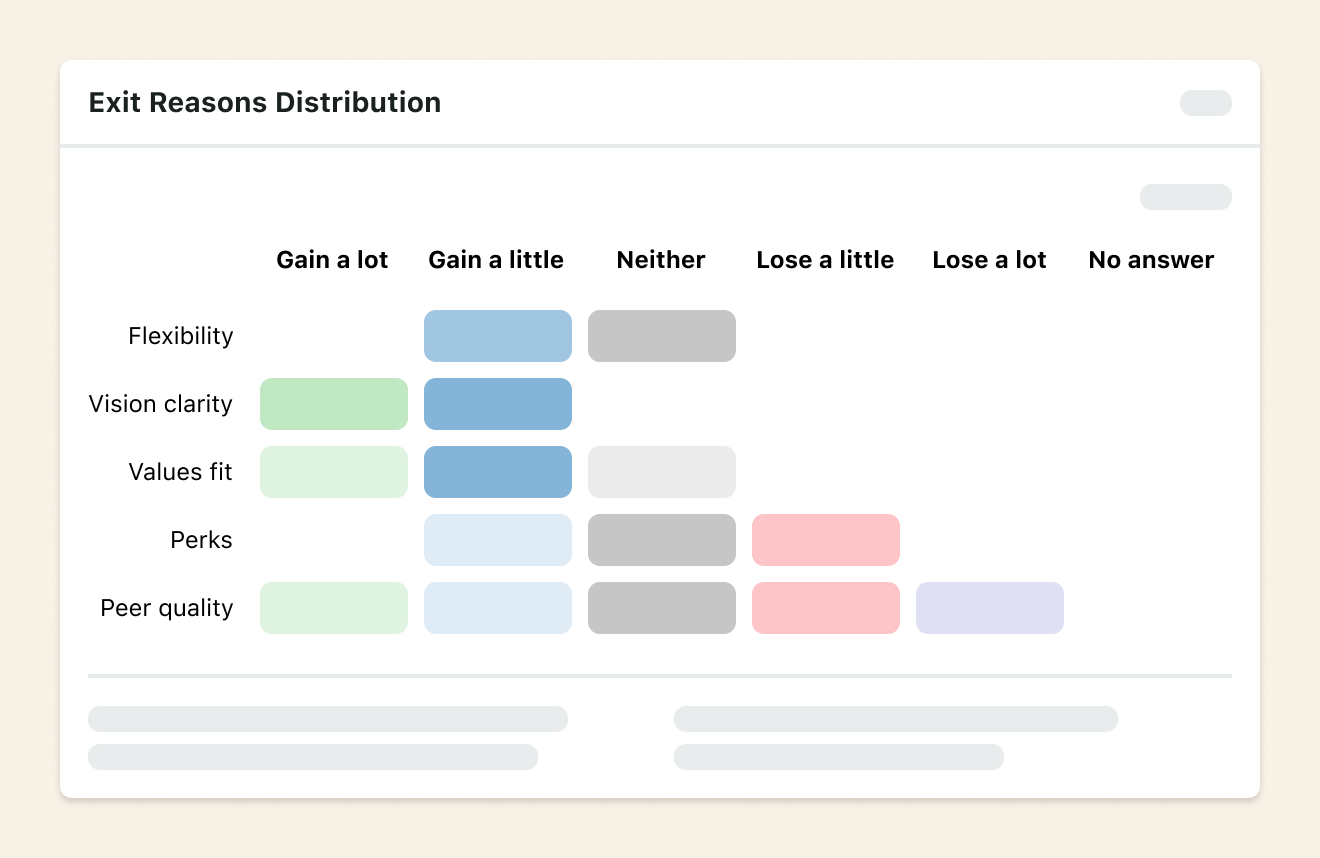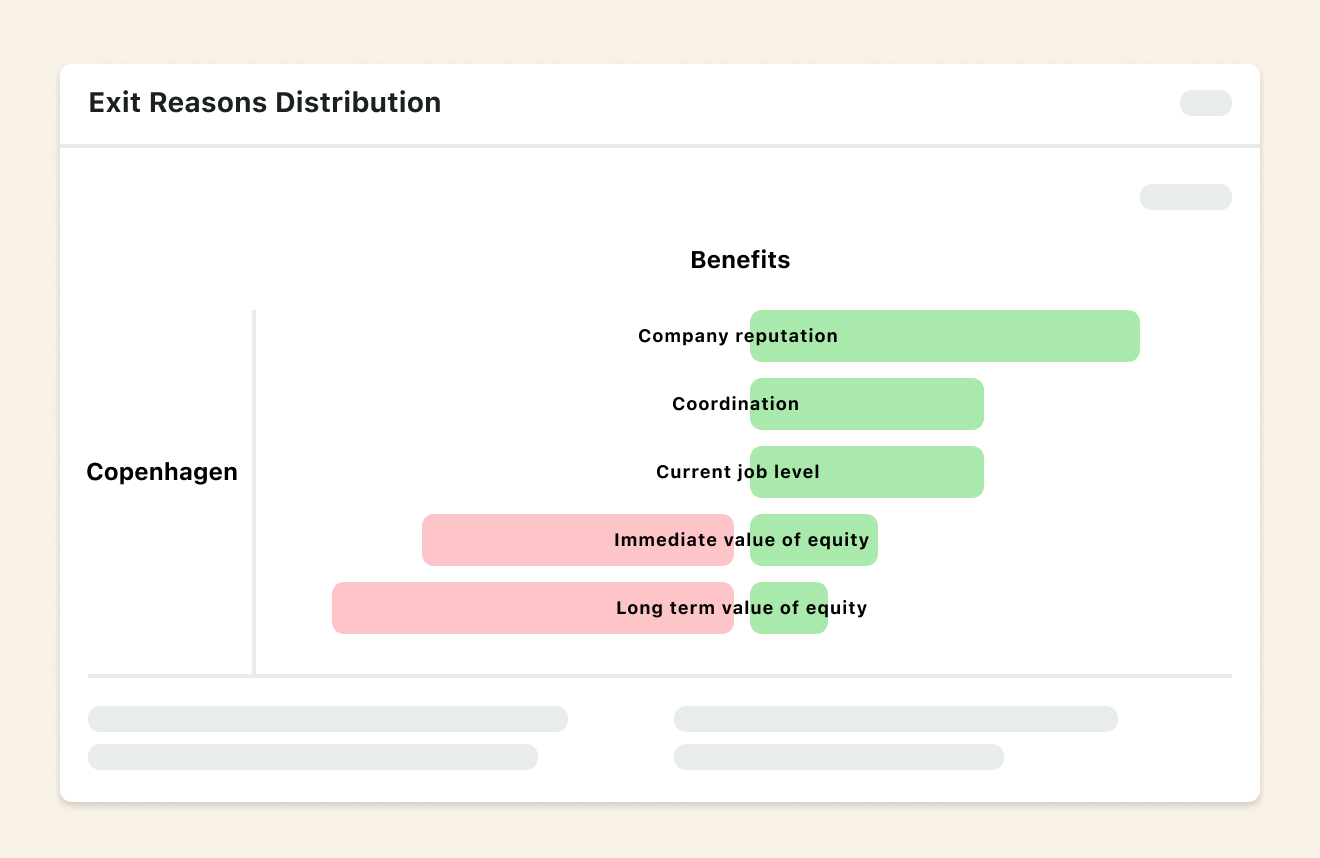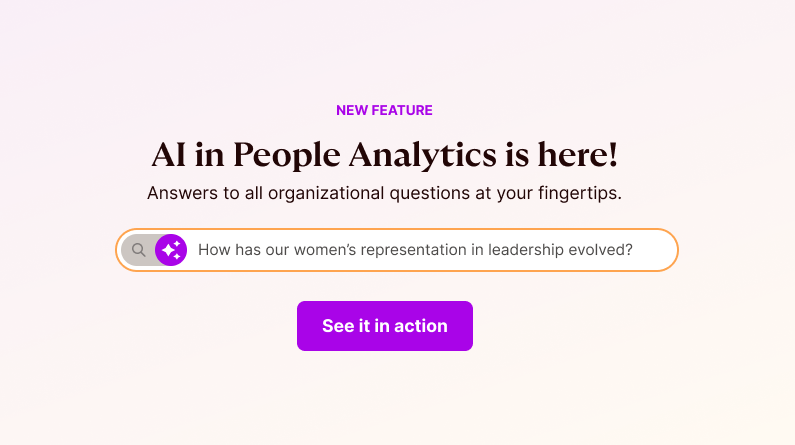Find common answers (and a way forward) from your exit interviews.
Employees leave for many reasons.
Looking back, there’s some we can control and others that we can’t. Collecting exit reasons is a valuable, though sometimes painful, task. But if we listen to and act on them, we can improve the experience for employees who are still working at our company.
If each employee says they will gain multiple dimensions by moving to their new employer, your areas of improvement can add up pretty quickly. Yet we don’t have to get pulled in multiple directions after each new exit interview.
We can aggregate the exit reasons you’re receiving and find out how many people expressed concern about each topic. That way, we can use feedback from employees who are leaving while putting those comments into context. Let’s dive into how we can understand what to do with the exit reasons from soon-to-be former employees.

How do I understand the distribution of employees’ exit reasons?
After an exit interview, you’re left with a number of areas where employees expect to gain from their new employer and some areas where they expect to lose something by leaving.
Our Exit Reasons Distribution metric helps you structure and understand your ex-employees’ self-reported reasons for leaving the company. By collecting the reasons for voluntary employee turnover all in one place, you’ll learn what your employees expect to gain or lose by changing employers.
For the first step, collect your former employees’ reasons for leaving into your relevant people database (e.g., your HRIS) and categorize them into topics.
These could include:
- Job fit
- Values fit
- Work flexibility
- Peer quality
- Manager quality
- Learning and development opportunities
- Benefits
- Company reputation
- … and more
By integrating your HRIS and using our automatically-delivered Exit Survey — you’ll be able to see the most common issues across employees with different characteristics.
Start with a heat map of the reasons that leaving employees have shared.

From this, you can compare the exit reasons for more than one group of employees.
Take, for example, the reasons why employees from one location leave compared to those who worked at a different office.
We can compare these groups with a butterfly chart, like the one below.

So what?
Once you know what the most common challenges are that can contribute to people voluntarily leaving your organization, you can work to remove those barriers. This three-step approach is a good place to start after getting your exit reasons metric.
1. Triangulate what you found here with other sources, including:
— current employee data
— glassdoor information
— scientific evidence
— industry reports.
This way, you can find overlap between multiple sources of information to give you stronger guidance on what you should change.
2. Then, design the changes you’ll be implementing with your current employees’ input. Co-design helps to make more tailored solutions and improve employees’ reactions to the change you’re making.
For example, employees are more motivated and think their performance management process is fairer when they have a more active role in it. As well, employees’ that are asked for their input have more trust in leadership, which in turn can make them more accepting of organizational changes.
3. Monitor the impact of your changes over time. Testing and tracking can find any backfiring effects of your changes earlier, especially if you monitor employee commitment and other predictors of turnover. This kind of tracking process can show you if your solutions are actually addressing employees’ pain points and improving retention.


From the Talent Management series: